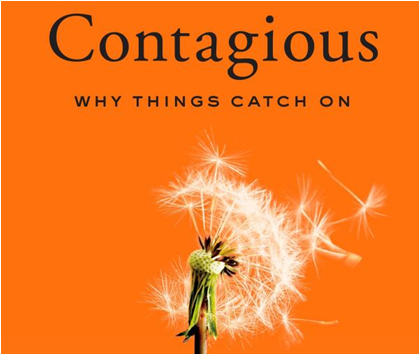 What do hundred-dollar cheesesteaks, a golf ball destroying blender and a phone booth with a trick door have to do with creating great B2B marketing content?
What do hundred-dollar cheesesteaks, a golf ball destroying blender and a phone booth with a trick door have to do with creating great B2B marketing content?
In his book Contagious: Why Things Catch On, Jonah Berger uses each of these viral marketing sensations to help explore the question of why some products, ideas and behaviours succeed while others fail (a question at the heart of all marketing).
If only there was a simple way for marketers to create the next Will It Blend? or United Breaks Guitars! Unfortunately, while there isn’t a formula to ensure your B2B marketing content will be popular and widely shared, as the book highlights there does tend to be six key ingredients that make up a recipe for contagious content.
1. Social Currency
What is ‘social currency’? According to the book, social currency accumulates when “people share things that make them look good to others.” If you’ve never heard of the New York bar, Please Don’t Tell, you’ll want to check this out to see how powerful social currency can be. From a B2B content marketing perspective, you can create social currency by delivering information that will make prospects look good when they share it with others, such as members of the C-Suite, managers, or colleagues.
2. Triggers
Triggers are “stimuli that prompt people to think about related things.” When thinking about triggers for B2B marketing content, carefully consider context. Successful B2B marketing content is designed for every prospect’s unique environment, situation and business problem, helping to make things personal and keep the brand top of mind.
3. Emotion
B2B marketing is often thought of as less personal, but B2B marketing content can still be rooted in emotion. However, as the book notes, content that is physiologically arousing (such as anger or excitement) tends to outperform content that evokes other types of emotion. From a B2B perspective, focus on highlighting core paint points and intimating how your expertise can solve a problem like increasing revenue, decreasing costs, improving productivity or decreasing risk.
4. Public
As highlighted in the book, the late great Steve Jobs understood better than most that observability matters (hence why the Apple logo faces outwards on the top of its laptops). Designing your B2B marketing content so that it’s powerful enough to stand alone and leave a lasting impression is crucial. People tend to imitate and share because the choices of others help provide information, known as “social proof”. A great way to lend social credibility to your content is to include brief case study features that highlights the successes of your customer base.
5. Practical Value
The simple idea here is that people like to help others and are more than willing to spread great content of practical value. Be sure to keep your B2B marketing content concise yet detailed, and remember to “package your knowledge and expertise so that people can easily pass it on.”
6. Stories
Embedding B2B marketing content as part of a story can help to make virality valuable. Stories, like ancient Greek tales, help to carry information in ways that straight content can’t. Focus on building Trojan Horses by embedding your content into a greater storytelling narrative that relates to the stage of the buying process your content is targeting.
While Contagious is admittedly a bit light and the major ideas are pretty high level, it’s full of great anecdotes and case studies on contagious marketing and ideas and is certainly worth a read. The STEPPS framework is a great simple tool for any B2B marketer to validate and develop great B2B marketing content ideas. If you’d like to understand more about marketing strategy and tactics, or need help developing great B2B marketing content, download one of our marketing white papers like Getting Started with Twitter.
